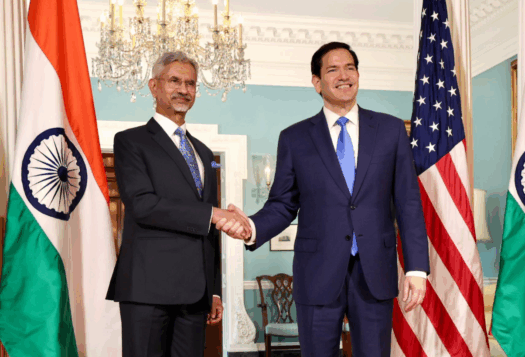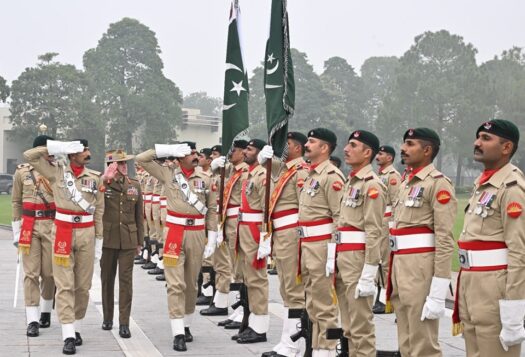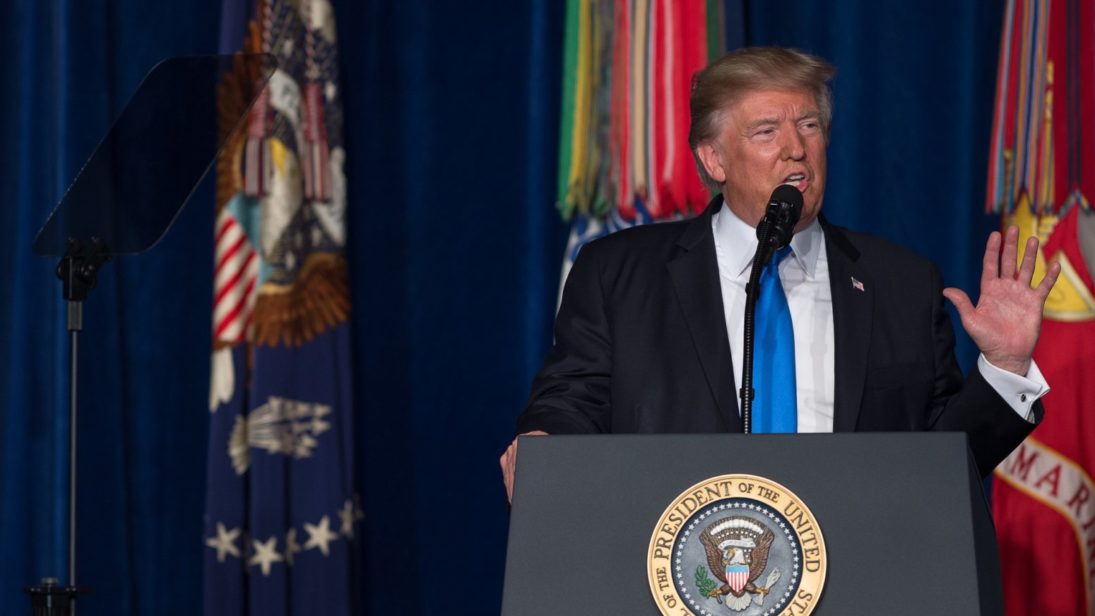
Announced on August 21, 2017, U.S. President Donald Trump’s new strategy for Afghanistan and South Asia was warmly welcomed in Afghanistan, with the hope that it would turn the tide of the war in favor of the Afghan government and its allies. Although it did not rule out diplomatic and political endeavors, Trump’s strategy primarily focused on military power, including a troop surge, modernizing the Afghan air force, and intensifying drone strikes to achieve its objectives.
Tested on its one year of implementation and realities on the ground, the Trump administration’s South Asia strategy has revealed its inability to deliver in Afghanistan. One year later, the Taliban is a stronger threat for Afghanistan, prospects for peace talks are grim, and regional actors are pursing strategies divergent from the United States to achieve their own objectives in Afghanistan.
In its implementation over the past year, however, the United States has vacillated between uncompromising rhetoric like “reconcile or die” and overly-compromising actions such as withdrawing U.S.-backed Afghan troops from sparsely populated districts, essentially handing Afghanistan’s rural areas over to the Taliban. Very recently, the Trump administration’s national security advisor, John Bolton, mentioned the possibility of privatizing the Afghanistan war. Tested on its one year of implementation and realities on the ground, the Trump administration’s South Asia strategy has revealed its inability to deliver in Afghanistan. One year later, the Taliban is a stronger threat for Afghanistan, prospects for peace talks are grim, and regional actors are pursing strategies divergent from the United States to achieve their own objectives in Afghanistan.
A Resurgent Taliban
In the one year since the launch of the new strategy, the Afghan Taliban has proved its strength in the face of military threats and intensified air strikes. General John Nicholson, commander of U.S. forces in Afghanistan, has threatened the Taliban that they would be militarily vanquished if they chose not to reconcile. In the first six months of 2018, U.S. forces dropped 3,000 bombs in Afghanistan, almost double the number for the same period in 2017.
Despite this onslaught, the Afghan Taliban has shown strength and made territorial gains. In May, Taliban fighters stormed Farah province, which borders Iran, and in August, they attacked the strategic province of Ghazni, about 100 miles from Kabul. The Taliban took control of the provincial capital for five days, killing 145 security forces and 60 civilians. Although the Taliban forces were eventually pushed back from the city, only three of Ghazni’s 18 districts remain completely under government control. The situation is similarly grim across the country–the Taliban controls or influences 56 districts and contests over 122 others across Afghanistan.
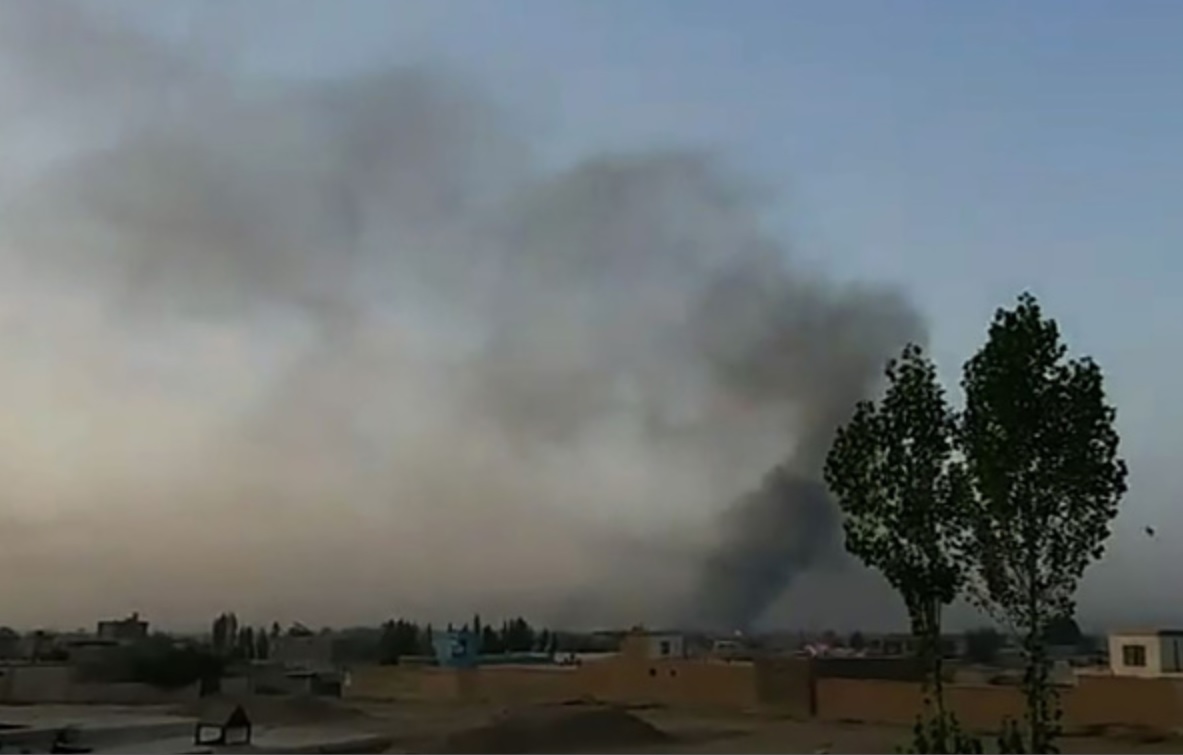
Recent developments indicate that the United States lacks the determination to continue its current strategy in Afghanistan. In late July, the United States urged Afghan troops to withdraw from sparsely-populated rural districts and concentrate instead on maintaining control of Afghanistan’s larger cities, a move that is likely to boost the Taliban’s confidence in winning on the battlefield. This significant concession was ostensibly made to decrease casualty rates among Afghan security forces, which have been unsustainably high since 2014–estimated to be two percent per month or a quarter of the total number per year. However, if the Ghazni attack is anything to go by and is an indication of what’s to come in 2018, the death toll this year could be “triple the worst known year so far,” according to The New York Times.
Fading Prospects for Peace Talks
Although peace talks with the Taliban have been an option since 2007, and have gone through many ups and downs since then, 2018 saw a new emphasis on restarting the process. In a gesture of goodwill, the Afghan government announced a unilateral ceasefire with the Taliban between June 12 and 19, which was reciprocated by the Taliban for three days of the Muslim holiday of Eid ul-Fitr.
The Taliban remains unwilling to include the Afghan government in peace talks, the group’s ties with al-Qaeda raise concerns about Taliban potentially strengthening its position further, and back-channel talks by Washington and Moscow are undermining the Afghan government’s role in the peace process as a sovereign state capable of dealing with the Taliban.
The Afghan government has consistently stressed the importance of an “Afghan-led” peace and reconciliation process. However, recent actions by the United States and Russia threaten to undercut the Afghan government’s role, which will only serve to embolden the Taliban. In February, the Taliban wrote an open letter urging the “American people” and “peace-loving congressmen” to pressure the Trump administration to engage in direct peace talks with the group. In July, the Trump administration seemed to respond to this proposal, reportedly instructing its diplomats to talk directly with the Taliban. This move provoked the Afghan government to once again emphasize the importance of an Afghan-led peace process. In late July, senior U.S. diplomats agreed to the Taliban’s demands and met with Taliban officials in Qatar, without any Afghan officials present. Meanwhile, Russia had scheduled peace talks in Moscow for September 4 to which the Taliban, the United States, and the Afghan government were invited–the Taliban accepted Russia’s invitation to these talks but both the United States and the Afghan government declined. For now, Russia has postponed the talks at Ghani’s request. What’s more, the Afghan government announced a second (but conditional) ceasefire with the Taliban for three months effective August 20, but this time the Taliban did not agree to participate.
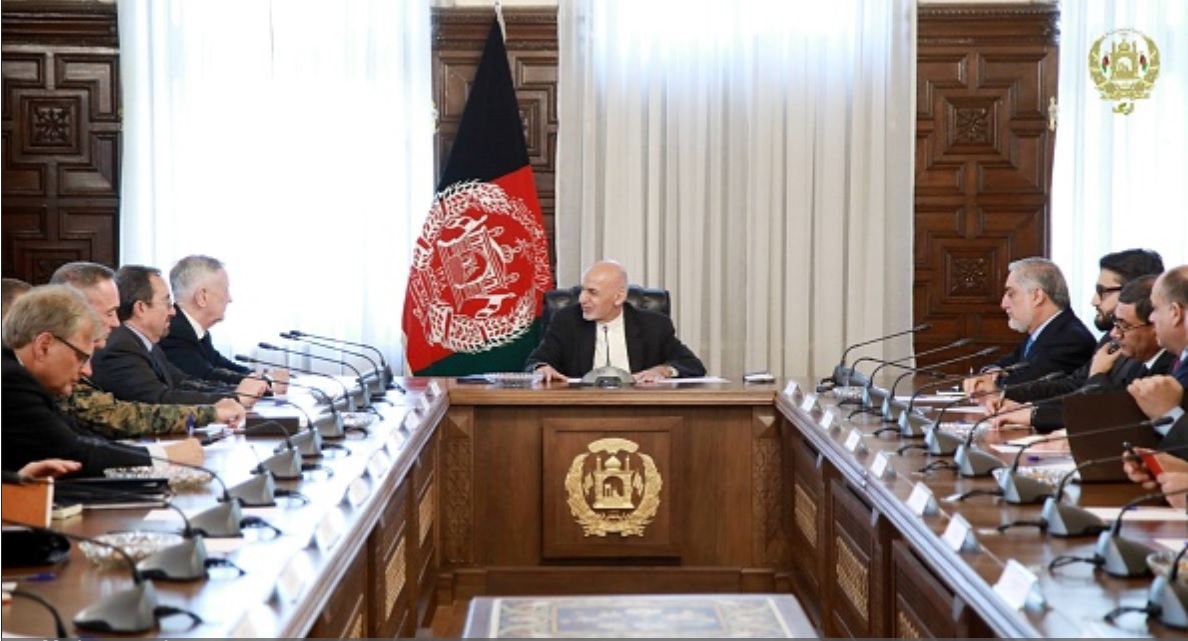
These developments suggest that the Afghan government’s long-held nightmare of being kept out of the Afghan peace process is coming true. Direct talks between the United States and the Taliban generate the fear that such an action would amount to the Taliban’s recognition as equal to the Afghan government and would undermine Afghanistan’s sovereignty as a state. Similar concerns are at play with regard to Russia. The Afghan government probably feared that Russia, which supports the Taliban and is aligning with other regional powers like Iran, Pakistan, and China to counter the United States in the region, would control the agenda of the Moscow talks in ways unhelpful to Afghanistan.
The Ghazni operation also revealed another worrying obstacle to the peace process: the Taliban’s close ties with al-Qaeda. Local media reported that as many as 300 al-Qaeda fighters fought in Ghazni alongside the Taliban. A United Nations report released on July 27 also confirmed that al-Qaeda’s alliance with the Taliban “remains firm.” This could make peace negotiations with the Taliban even more difficult, if not impossible, since one of the U.S. conditions for talks with the Taliban has been that the group sever ties with international terrorist groups like al-Qaeda.
As such, one year after Trump’s announcement of a new Afghanistan strategy, prospects for peace talks are not promising. The Taliban remains unwilling to include the Afghan government in peace talks, the group’s ties with al-Qaeda raise concerns about Taliban potentially strengthening its position further, and back-channel talks by Washington and Moscow are undermining the Afghan government’s role in the peace process as a sovereign state capable of dealing with the Taliban.
A Region Divided on War and Peace
There seems to have been a shift in the strategic calculations of Pakistan, Iran, Russia, and China with regard to Afghanistan and they are increasingly coordinating efforts to achieve their common objective of opposing the U.S. vision for the country.
Immediately after President Trump announced the new strategy, it was criticized in almost one voice by regional actors including Pakistan, Iran, China, and Russia. There seems to have been a shift in the strategic calculations of Pakistan, Iran, Russia, and China with regard to Afghanistan and they are increasingly coordinating efforts to achieve their common objective of opposing the U.S. vision for the country.
This is clearly manifested in various individual and collective actions on the part of these countries. For instance, in a first, the chiefs of intelligence of these four countries recently met to discuss how to tackle counterterrorism challenges in the region, focused mainly on the Islamic State in Afghanistan. Meanwhile, Iran has escalated its support of the Taliban over the past year by providing “hundreds” of their fighters advanced training conducted by its special forces—in fact, Afghan government and police officials accused Iran of being behind the Taliban attack in Farah province in May. Russia, too, has been suspected to have expanded its support for the Taliban over the past year and has made several attempts to involve them in peace talks.
The recent change in U.S. policy against Iran further motivates it to act against U.S. presence in Afghanistan while Russia has misgivings about U.S. presence in what it considers its backyard. Moreover, the recent U.S. trade war with the China complicates prospects for Washington and Beijing to cooperate in Afghanistan and may also push it towards opposition. Meanwhile, U.S. drone strikes in Pakistan and Trump’s stance against Taliban sanctuaries in the country drives Islamabad to make common cause with this group. In short, it seems that the United States and Afghanistan remain alone in their pursuit of peace and confronting the threat of the Taliban and IS in the region.
Conclusion
One year later, it is clear that the United States’ new strategy in Afghanistan has not resulted in positive change. The Afghan Taliban has become stronger and now threatens strategic provinces, prospects for peace talks remain gloomy as Taliban’s link with al-Qaeda has resurfaced, the Afghan government is continuously undermined, and regional actors diverge significantly from the United States on issues of war and peace in Afghanistan.
***
Views expressed in this article are the author’s own and do not necessarily reflect those of the organizations with which he is affiliated.
Editor’s Note: The United States’ Strategy in Afghanistan and South Asia, announced one year ago by U.S. President Donald Trump at Fort Myer military base in Arlington, Virginia, marked a shift in the nature of U.S. presence not only in Afghanistan, but across the region. In this four-part series, Neha Dwivedi unpacks how the South Asia strategy influenced the Afghan peace process, Bismellah Alizada explains how the policy influenced the political and security situation in Afghanistan, Shreyas Deshmukh unravels its impact on Indo-U.S. relations, while Uzair Kayani and Sikander Shah delve into its effect on U.S.-Pakistan ties. How effective were the actions undertaken by the United States after the South Asia strategy was announced, and where is U.S. policy heading one year later? Read the series here.
***
Click here to read this article in Urdu.
Image 1: U.S. Joint Chiefs of Staff website
Image 2: Stringer/AFP via Getty Images
Image 3: Afghanistan Presidency Press Office/Handout/Anadolu Agency via Getty Images
